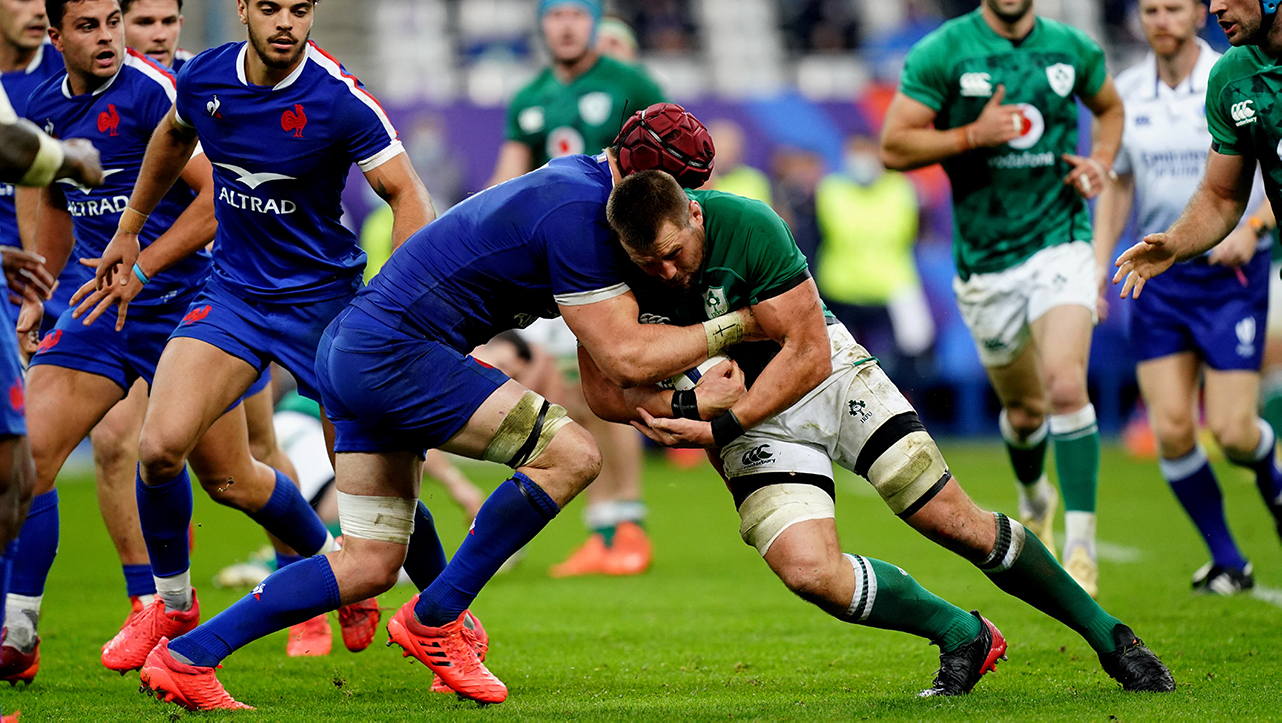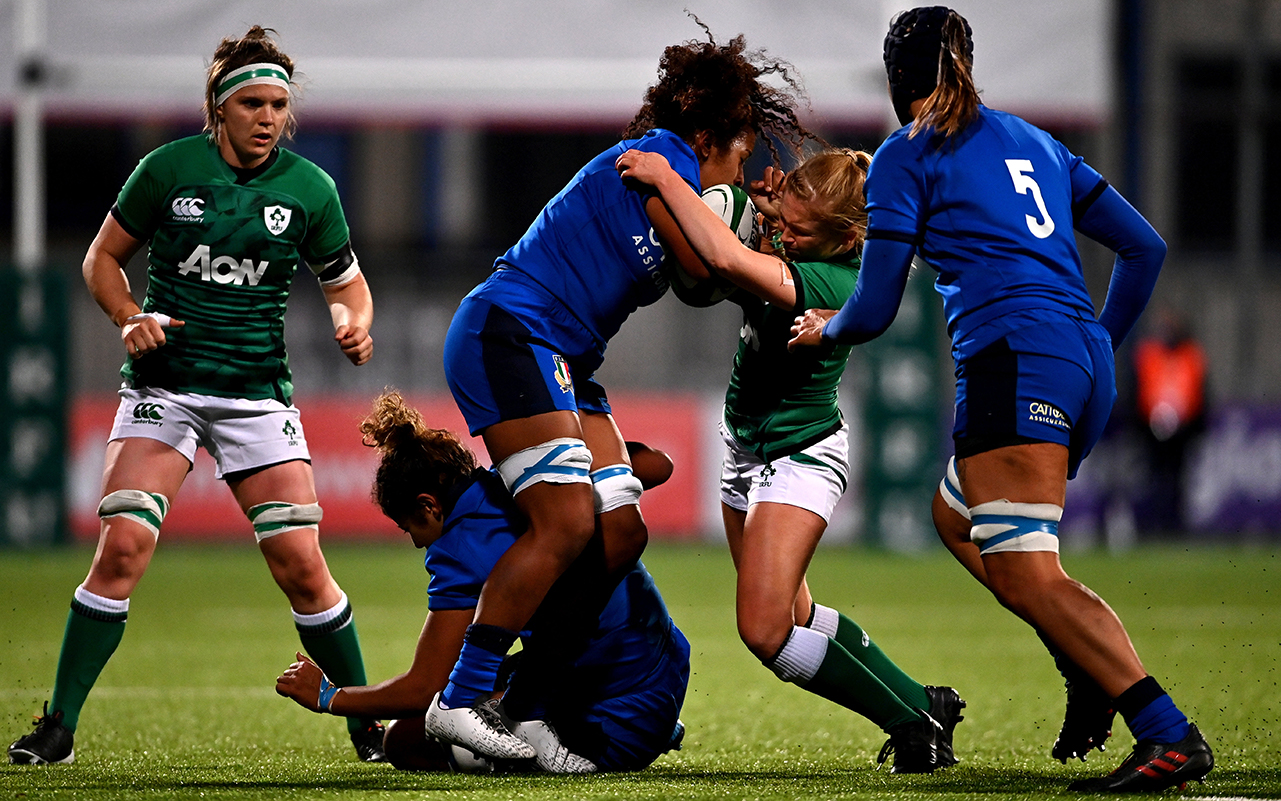Experts in rugby collisions and the tackle area joined Off The Ball for Science Week to discuss the impact that bigger, faster players will have in terms of concussion and other injuries.
The danger of concussion is ever-present in contact sports such as rugby, with studies showing that tackles where both players are upright carry a 50% greater chance of a concussive injury.
Additionally, a New Zealand study found that the tackle area accounted for 58% of the injuries connected to rugby.
For Science Week 2020, we want to facilitate and drive informed conversations on the choices we have ahead of us.
Science is the solution to a shared better future; we are asking people to Believe In Science and play a role in choosing our future.@ScienceWeek | #ScienceWeek pic.twitter.com/zzRbAKGy5R— Off The Ball (@offtheball) November 6, 2020
Leinster team doctor, Dr John Ryan discussed how World Rugby are looking at making the tackle area safer for both attacker and defender.
“Concussion has been recognised as occurring from standing up defenders,” Ryan said.
“So, we are looking at modifying the laws to bring the tackles much lower rather than higher tackles.
“World Rugby have more than done their bit in addressing the issues and looking at injury patterns and address the changes and laws to mitigate them.”
In 2016, it was found that of 160 professional rugby players in Ireland, 47 of them had suffered a concussion in a single season.
Chartered physiotherapist and ex-Ireland international Fiona Steed sees concussion as one of the biggest threats to the modern rugby player.
“Everybody who takes up any sort of either refereeing or coaching course now have to do the concussion module,” Steed said.
“In terms of recognising it, removing the player and ensuring that full recovery is made.
“The IRFU has strict guidelines, World Rugby have strict guidelines on that.
“Whatever about your ACL, your shoulder ligament injuries and AC joints are injured a lot, it is the concussion piece which can have huge consequences if not dealt with correctly.”
 CJ Stander of Ireland is tackled by Bernard le Roux of France during the Guinness Six Nations Rugby Championship match between France and Ireland at Stade de France in Paris, France. Photo by Sportsfile
CJ Stander of Ireland is tackled by Bernard le Roux of France during the Guinness Six Nations Rugby Championship match between France and Ireland at Stade de France in Paris, France. Photo by SportsfileAs rugby players continue to look for an edge on the pitch, they will inevitably look to get quicker and stronger.
Ex-Munster and Ireland player Ian Dowling believes that these bigger collisions are unavoidable, so they need to be made safer.
“I think it is multi-factorial,” Dowling said.
“Players are getting bigger and faster, it is kind of inevitable, they are trying to get that one percentage advantage.
“The collisions are obviously going to get much greater, and at the tackle, at the breakdown, that’s where we are going to see the majority of injuries for shoulders and knees.”
Professionals vs amateurs can lead to greater injury
Although some players are always going to be bigger than others, Steed believes that proper technique on both sides of the tackle can ensure the safety of both players.
“If you can divide it between the professional and the amateur game, I think that is the key,” Steed said.
“Professionals are really finely tuned athletes, who obviously have enormous strength and conditioning; they are playing like-for-like.
“There will always be a slight disparity of size.
“If you look at Craig Casey for example absolutely playing really good for Munster but play him up against Jean Kleyn in training for example, then it is all about technique.”
However, in the women’s game, which is largely amateur in Ireland, there is the possibility that a professionally trained athlete will come head to head with amateurs.
“The problem for me would be, when you have really highly tuned female athletes, if they come back to play in the AIL or against club players who are training two nights a week,” Steed said.
“It is when that disparity happens between athletes who are really fit and really develop and athletes that aren’t.
“I don’t think it will happen in the amateur men’s game, because there isn’t that flow of professionals back to the All-Ireland League as [there were back in the day].”
 Giada Franco of Italy is tackled by Kathryn Dane of Ireland during the Women's Six Nations Rugby Championship match between Ireland and Italy at Energia Park in Dublin. Due to current restrictions laid down by the Irish government to prevent the spread of coronavirus and to adhere to social distancing regulations, all sports events in Ireland are currently held behind closed doors. Photo by Ramsey Cardy/Sportsfile
Giada Franco of Italy is tackled by Kathryn Dane of Ireland during the Women's Six Nations Rugby Championship match between Ireland and Italy at Energia Park in Dublin. Due to current restrictions laid down by the Irish government to prevent the spread of coronavirus and to adhere to social distancing regulations, all sports events in Ireland are currently held behind closed doors. Photo by Ramsey Cardy/SportsfileSize does matter in a tackle
There is a potential solution to the dangers of the disparity between more developed players, particularly at younger levels.
New Zealand uses weight categories rather than age categories at school-level clubs to ensure that rugby remains inclusive and smaller players are able to play safely against players their own size.
“Keeping the sport inclusive, the under 85 kgs competition and weight-restricted rugby could be a great initiative to keep people involved,” Dowling said.
Science is the solution to a shared better future and for #ScienceWeek 2020, we are asking people to play a role in choosing our future. Science Week is supported by Science Foundation Ireland and is Ireland’s national celebration of science for all ages. Visit scienceweek.ie for information. We’ve got a special vignette now for you with OTB’s Shane Hannon joined by both some experts in the field of Sports Science and some former players to tell us where they see the sport of rugby going








